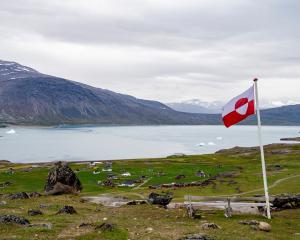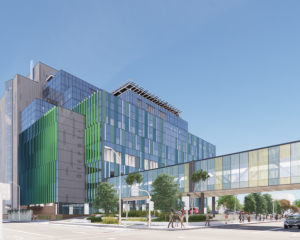A fascinating op-ed article - ''Melting pot secures future for United States'' (ODT, 19.3.15) - prompted me to think further about the direction in which our own city, province and country are heading.
William H. Frey's article pointed out that a ''just-released Census Bureau report shows that by 2044, whites will no longer comprise a racial majority in the United States''.
The entire country will then be as Los Angeles is today, as anybody passing through its airport will realise if they pause to look.
As a consequence the US expects to avoid the inevitable demographic and economic consequences of an ageing ''white'' population, economic decline and to obtain a substantial competitive advantage.
Dr Frey's article made me curious about New Zealand's situation.
Last year I helped write ''Our Futures'' for the Royal Society, an analysis of various trends identified in the 2013 Census.
Among the most dramatic was the diversification of our population. Various shifts were proceeding.
The proportion identifying themselves as European increased between 2006 and 2013, but the proportion of British had fallen.
Most striking of all, however, has been the increase in the population identifying as Asian.
Most of this growth has occurred in the last 20 years.
In the 2013 Census some 88% of the population 65 and older identified as European, compared with less than 13% who identified as Maori, Pasifika or Asian.
If we look at those 14 and under, however, the extent of change in the next 20 years becomes clear: only 71% identified as European whereas 24% said they were Maori, 13% Pasifika, and 12% Asian. A high proportion of this youthful group claimed more than one ethnic identity.
Equally striking, one in four of New Zealand's residents had been born overseas (compared with one in five in 2001 and one in seven in 1961).
In 1961, almost all immigrants came from Britain; since 2011, immigrants from both India and China have each provided as many as Britain.
A surprisingly high proportion of non-European immigrants who choose New Zealand as home are Christian (this has helped the Catholic Church become the largest single denomination in the country at 11%).
We might also note than one in four of those born in New Zealand live outside the country. Some will return, but by no means all.
Substantial regional differences exist.
Auckland has become for New Zealand what Los Angeles has long been for the United States and Vancouver and Toronto have become for Canada - the fast-growing dynamos transforming their countries.
Asian communities now constitute almost one-quarter (23%) of Auckland's population, much larger than Pasifika (15%) or Maori (11%).
The biggest communities now hail from India, South Korea and China.
If the trend continues, 30% of Auckland's population will be of Asian origin by 2021. Given that 60% of the world's population is Asian and Asia is the closest major continent to New Zealand this is not surprising.
With 39% of its population born overseas, Auckland is now one of the world's immigrant cities.
It also has a much higher proportion of young couples than the rest of the country, a higher fertility rate, and between 2006 and 2013 accounted for over half New Zealand's population growth.
There is already plenty of evidence to suggest that the next generation will behave like previous generations of New Zealanders and marry across the various ethnic boundaries.
Youth and cultural diversity make for demographic and social dynamism.
As I pondered these changes, however, I realised Dunedin and Otago have scarcely been touched by the trends which are transforming New Zealand.
Despite a recent and welcome increase in new immigrants settling in Otago, even Invercargill and Southland have higher proportions of Maori, not to mention immigrants from Latin America and Asia (the Asian percentage in Southland having almost doubled since 2006).
The Government can't do anything about this, for except in the case of refugees it has no power to determine where residents live.
Southerners have long viewed Auckland with suspicion. We should, however, put such suspicions behind us and look to the future.
When we think about how to ensure our economy responds to the fast-changing global markets and provides employment opportunities for our young, we also need to plan how to attract a greater proportion of migrants to Dunedin and Otago.
Otherwise we may well end up like one of those ageing American communities, dominated by elderly white folk scared of what their own nation has become.
Today's diversity is a boon and a godsend, occurring just in time to save us from our ageing white selves, trending (it seems inevitably) towards sub-replacement fertility levels.
The fact that a majority of the immigrants from Asia are young, and that about 40% of Maori and Pasifika are under 15, provides Auckland and New Zealand with what demographers call a demographic dividend.
The nation needs to make sure it reaps the advantage; Dunedin and Otago need to make sure we are not left behind.
Whether potential economic growth or greater cultural diversity are more important in the long run is not clear, but that both contribute to a dynamic and lively society is indisputable. Go to LA and see!
• Erik Olssen is a University of Otago emeritus professor in history.










